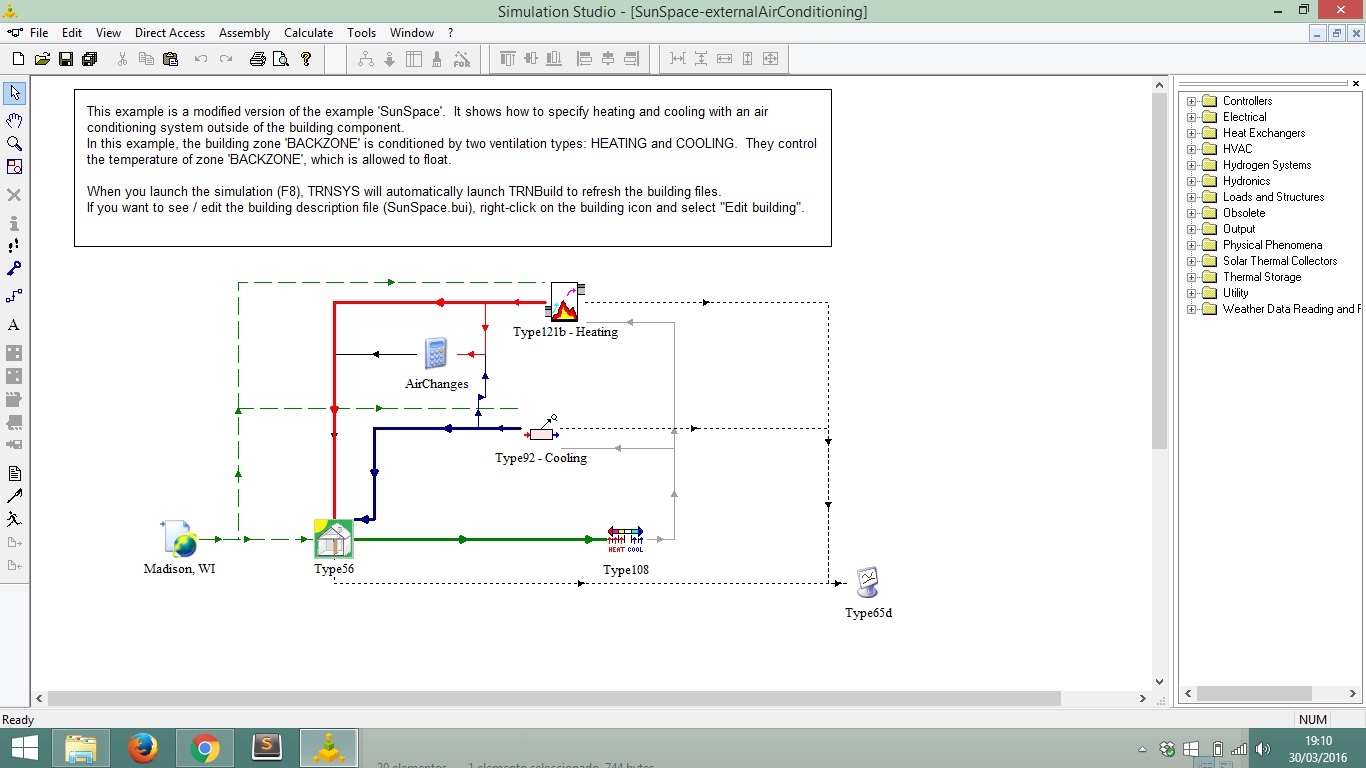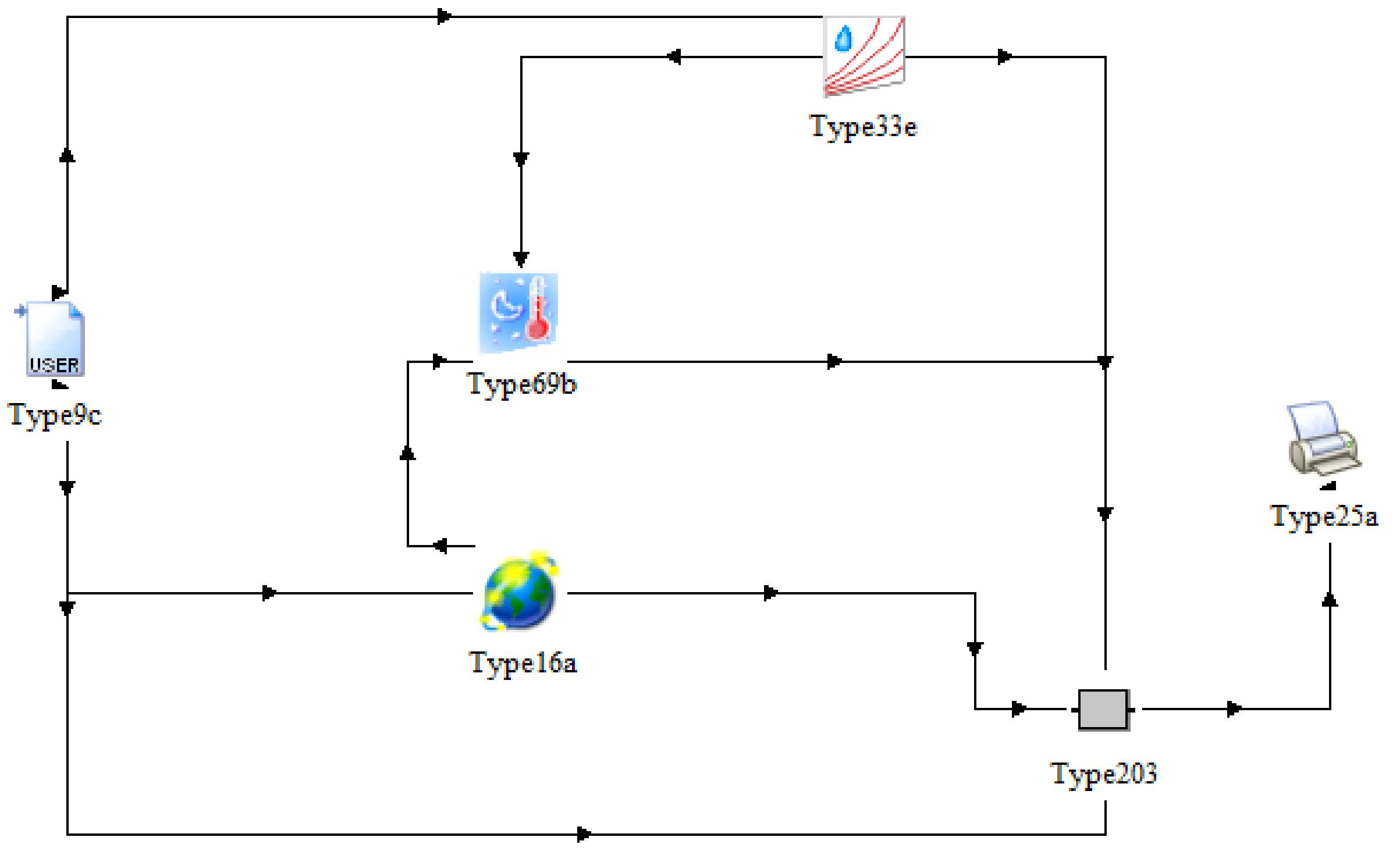

The enhancement of two-element costs is because of increasing output power from the turbine that results in increasing the cost of turbine and PEM unit. Overall ASHPWH TRNSYS model schematic To validate the heat pump water heater TRNSY model, the experimental data (Figure 4) were used as inputs in the Simulation Studio.

TRNSYS OUTPUT ELEMENTS SOFTWARE
Parametric study indicates that the main determinative elements in the total cost rate of the system are the heater, and the solar collector. Using TRNSYS software to carry out a time dependent simulation. The heat exchanger and thermal energy storage unit have the highest cost rate among all system components with 73,463 $ and 46,357, respectively. Higher energy and exergy efficiencies are obtained by reducing high pressure of the refrigeration cycle or decreasing the temperature outlet of an auxiliary heater. Based on these values, the energy efficiency, and exergy efficiency are computed to be 64.14%, and 49.62%, respectively. The proposed poly-generation set-up can produce cooling load, heating load, and hydrogen with amounts of 5.34 kW, 5.152 kW, and 63 kg/year, respectively.

The modeled poly-generation system's exergy and energy efficiency are maximized by considering the inlet temperature of the heat exchanger and primary pressure of the ejector with the parametric evaluation of the system. In between the controller and the scoreboard, a power inverter is used to convert the DC power from the battery to 120V AC required by the scoreboard. The battery used in the system is a 24V lead-acid battery with 200Ah capacity. Cooling and heating demand, as well as the net output power are calculated. output of the solar panels, monitors the state of charge of the battery, and controls the output to the load. All sub-systems are validated by considering recent articles. A proton exchange membrane (PEM) electrolysis unit is used for hydrogen production, an ejector refrigeration system (ERS) is utilized for cooling demand, and a heater unit is used for heating demand. This article is a careful examination of an energy poly-generation unit integrated with an evacuated solar thermal tube collector.


 0 kommentar(er)
0 kommentar(er)
